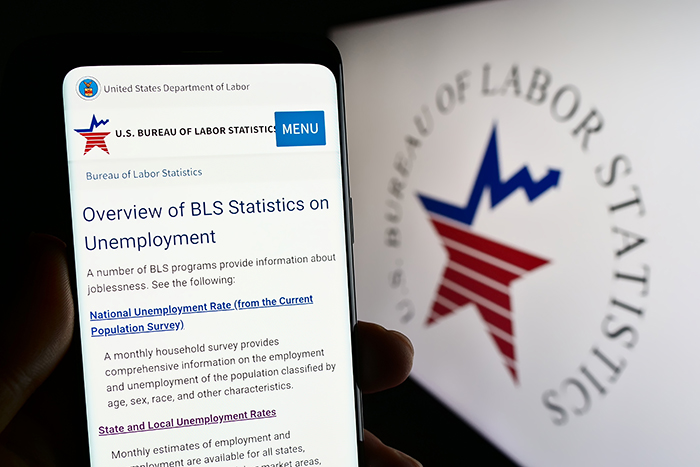If you’ve been a landscape contractor for any length of time, you know that there is a labor crisis in our industry. You have work, but not enough workers to get it done. And when you do get people, they often don’t stay, or aren’t able to perform the tasks you’ve assigned them.
Dustin Davis knows how that feels. Says the president of Metro West Lawn & Landscape LLC, St. Charles, Missouri, “We’re in a predicament now where we have quite a backlog of work, and we’ve hired everyone we could find. But it’s not enough. There’s so much training involved, and there are just not enough experienced people out there that are willing to work.”
What’s a contractor to do? Well, he can apply to the Guest Worker program, which brings in temporary workers from other countries. It’s nicknamed H-2B after the visas the workers are issued. The visas are only good for as long as the work lasts, however many months that is. Then, the workers go home, back to Mexico or Guatemala, where the majority of them live.
The consensus among contractors who’ve used the program is that it works well, when it works. Too often, however, it doesn’t.
Glenn Jacobsen started Midland Park, New Jersey-based Jacobsen Landscape Design and Construction 40 years ago. He’s also a past president of the board of directors of PLANET, now the National Association of Landscape Professionals. He used the H-2B program for 15 years, from 2001 to 2015, when he stopped.
“We used to hire about 15 or 20 H-2B workers every year,” Jacobsen says. “And for the first 10 years or so, it was a very positive experience. They became trained personnel who enjoyed working here for those nine or 10 months.”
 So why did he stop using the program?
So why did he stop using the program?
“They’re always changing the rules, making it more restrictive every year, and the process so difficult and expensive that it really wasn’t worth it anymore. We still never had a guarantee of getting our men, and it’s hard to run a company when you don’t know when your workforce is coming in.”
And that’s not the workers’ fault. They come when the U.S. Citizenship and Immigration Service, the arm of the Department of Homeland Security that administers the program, says they can.
No contractor I’ve ever spoken with has had anything but praise for the H-2B workers they’ve hired, including Jacobsen. “I have a lot of respect for them, because they work very hard. The quality of the people is very, very good.”
Chris Kristek, president and co-owner of Wickman’s Garden Village, Springfield, Missouri, usually requests 50 H-2B workers for the season. This years’ group was supposed to arrive April 1. When I spoke to him on April 25, they had still not arrived.
When I asked Kristek how much his business would be hurt if doesn’t get those workers soon, he said, “I would not use the word ‘hurt.’ I would use the word ‘crushed.’”
He says, “We’ve already had to bail out of some jobs. Even if they come some time next month, it’s to the point where it’s greatly affecting the continued viability of my company, one that’s been around since 1922.”
The number of guest workers allowed per year is capped at 66,000 divided into two quarters. Half of them, 33,000, arrive Oct. 1, the other half come April 1. Our industry draws from that pool, along with the reforestation, hospitality, restaurant and seafood processing industries. Landscape companies use up the lion’s share of the April 1 allotment. Occasionally the cap is raised, but never by enough to meet the demand.
The process is costly in both money and time. First, there’s a huge stack of paperwork — “three-quarters of an inch thick,” says Stephen Faulkner, owner of Faulkner Landscape and Nursery Inc., Hookset, New Hampshire — to get through. “You have to dot every i and cross every t, or you could have your application rejected,” he adds.
Because the process is so drawn out and difficult, many contractors hire companies like Labor Consultants International of Coeur D’Alene, Idaho, to cut through the red tape for them.
“You have to prove your need, that you have the work, and that there are no American workers who’ll take those jobs,” explains Terry Forrester, LCI owner and general manager. “The Department of Labor requires that you place help wanted ads in your local Sunday newspaper and another weekday edition. A single Sunday ad can cost anywhere from $500 to $3,000.”
“Then there’s the $1,825 application fee,” continues Forrester, “the consulate fee of $190 per worker; the cost of their inbound and outbound transportation; all the FedEx’s back and forth; and our fee. Most contractors end up spending around $10,000, once you add up everything.”
“The recruitment effort (taking out the ads) is expensive,” confirms Kristek. “We’re already into this for many thousands of dollars, just trying to get our visas for this year. I’m out all that money, without enough workers to create any production to help earn that back. I’m drowning.”
When I spoke with Paul T. Mendelsohn, NALP’s vice president of government relations on April 25, he’d just gotten off the phone with another contractor who also hadn’t received his workers on April 1.
“A lot of people haven’t gotten their workers yet, and they’re very upset and frustrated. Congress authorized the Department of Homeland Security and the Department of Labor to issue a certain number of visas but gave them discretion about whether they would do it or not.”
Kristek says, “Right now, I don’t have any firm answer from the government on when my guys might be able to show up. If I had a timeline where I knew when they were going to be here, that would help ease the pain. Otherwise I’m going to have to walk out on some contracts, and we’ve already lost some.”
“Thus far the administration has not acted, nor given us a timeline of when they plan to act,” says Mendelsohn. “We don’t know if they are going to raise the cap — issue additional visas — or by how many. We’re very concerned that they are slowplaying it. We might run into a situation such as we had last year, where there were around 90,000 businesses that were certified as having met the need, but they only authorized 15,000 additional visas.”
Playing politics?
The program has always been something of a political football. Some senators and members of Congress like the program, and some others don’t. One has to wonder if the anti-immigration tone coming out of the White House is affecting the way the program is being administered.
“It is affecting it, without a doubt,” says Mendelsohn. “Some of our congressional champions who’ve had direct discussions with the White House or the Department of Labor keep being told that these people are taking jobs that would otherwise go to citizens and are artificially holding down the wages of American workers. That’s along the lines of the anti-immigration rhetoric we’ve been hearing.”
But what they’re being told just isn’t true, according to Mendelsohn. He cites independent research that shows every H-2B visa issued creates or sustains 4.64 jobs — exactly the opposite of what the program’s critics are claiming. “It helps drive salaries up. When H-2B workers are getting the prevailing wage, as is required by the Department of Labor, it drives up wages throughout the entire company.”
 Faulkner can attest to that. “I have 16 regular employees and bring in six H-2B workers every season.
Faulkner can attest to that. “I have 16 regular employees and bring in six H-2B workers every season.
Those six guys are so proficient and well-trained that I can afford to grow my company and pay my American workers better money.”
And, they’re failing to take into account what Mendelsohn called “the downstream impact,” or ripple effect, that denying or delaying the H-2B workers has on local economies. Kristek can attest to that. “I’ve been wanting to buy some new equipment, but if I don’t have people to install the jobs, I don’t need them. We won’t buy nearly as many materials — mulch, plants, pipes — and that affects our suppliers and our suppliers’ suppliers.”
The guest worker program gets lumped into the immigration debate. But it shouldn’t, because the H-2B’s aren’t immigrants. As Mendelsohn points out, an immigrant is someone who plans to permanently move to another country.
“The H-2B program doesn’t allow that. They have a date when they’re supposed to go back, and 99 percent of the people abide by that. They have families and responsibilities back home. The program allows them to provide for a better life for their family in their home countries without needing to move to the United States.”
Why is this such a crisis?
In the five-plus years I’ve been writing articles for this magazine, I’ve heard contractors all over the country, in every region, say repeatedly that they have trouble finding workers. When they do, they discover that many of them fibbed about their skills, had bad attitudes, or weren’t prepared for how hard the work is.
A few have stopped doing pre-employment background checks and drug tests saying that if they did them, they’d have no employees at all. “And it’s not a wage issue, either,” says Davis. “Offering more money doesn’t get you better people, necessarily.”
Theories persist about the current state of affairs. Alex Salazar, co-owner of The Salazar Landscape Co., Sun Valley, California, says his company has not had any luck hiring people between 18 and 25. “They have a very poor work ethic, and they don’t stay on. Our field is very intense, very labor-heavy, and often it’s something they just can’t handle.”
Davis is even more blunt. “The American workforce has gone soft,” he contends. “I know that’s a broad statement that doesn’t apply to everybody. But they seem to have a lot of personal issues that get in the way of them coming to work — ‘my grandma died,’ and so forth. ‘Oh, didn’t she die last month, too?’ Meanwhile, there are six H-2B guys sharing an apartment who have to be deathly ill before they’ll miss work, because their families back in Mexico are depending on them.”
Right now, we have a very low unemployment rate. That’s a factor, too. So is the seasonal nature of our business. Many good American workers are lost because they have to find other jobs to fill out the rest of the year; they often don’t return.
But the H-2Bs do. Many work for the same contractor for 15 or 20 years, becoming interwoven into the fabric of the business. “That’s what happens,” affirms Jacobsen. “They become part of your family.”
Faulkner, who owns both a landscape company and a nursery, depends on the skills of his returning H-2B workers. “You need a lot of people, when you’re getting 10 or 12 tractor-trailer loads on a Monday. My guys know my irrigation system, know where I like to put everything. It took four or five years for them to learn that.”
Last year, he couldn’t get any of them. “And it was hell around here. We were stacking trees on top of trees, just to get them off the trucks. A lot of the trees were damaged or died.”
Taking on the problem Clearly, our industry needs to start attracting young people. NALP is trying to do that via it’s Industry Growth Initiative. “We want the public to fall in love with this industry, to see the benefits of healthy lawns and landscapes, and for the best and brightest to seek careers in it,” says Missy Henriksen, NALP’s vice president of public affairs.
NALP recently launched a Landscape Industry Careers website. “In January, we launched an annual Landscape Career Day, supported by a host of planning and promotional materials. We developed a 22-page toolkit to help companies put on successful career day events, such as hosting community service projects in their neighborhoods or working with a local scout group,” Henriksen says.
The idea is to reach out to students, parents, educators and even working adults who don’t like their current career paths, make them aware of all the opportunities offered by our industry and also dispel any misconceptions they may have about it.
This is clearly the way to go. If we can encourage young people to view green industry careers as the well-paying, opportunity-filled, satisfying occupations that we know them to be, we can assure a willing, able and competent workforce that will take us into the future. Don’t we have to?





